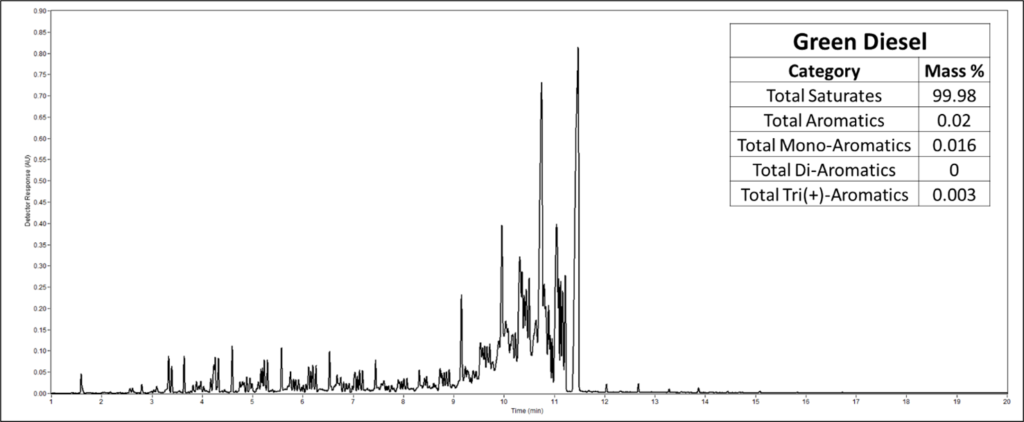Published Alex Hodgson on February 8, 2021
Anyone that follows our activities should know we never rest when it comes to developing new methods and applications for our VUV Analyzer Platform. In fact, we’re gearing up to run an inter-laboratory study (ILS) for our diesel method this month. Let’s check in on the state of the method and see how things are looking even better for diesel analysis.
Since my first post back in April last year, we have a few updates regarding the scope of the method. By adding an additional 5-minute hold time at the final oven temperature, we’ve extended the carbon range from C28 to C30. We’ve also improved the capabilities of VUV Analyze for biodiesel determination, which expands the biodiesel range to 2-20% by volume. This expanded range will allow us to reach a wider audience worldwide as all the major diesel- and biodiesel-producing countries have wildly different renewable diesel mandates.
Speaking of biodiesel, our original proposed scope only covered biodiesel from soy and canola sources since these are the two most common in North America. In another effort to make our method more applicable internationally, we’re adding rapeseed-derived biodiesel (often used in Europe) to our ILS scope. Rapeseed oil contains many of the same fatty acids as soy and canola: palmitic (C16:0), stearic (C18:0), oleic (C18:1), linoleic (C18:2), and linolenic (C18:3) acids. While rapeseed also contains significant amounts of gadoleic (C20:1) and erucic (C22:1) acids, these compounds elute with very few interferences, allowing us to easily identify and quantitate them.
In addition to biodiesel blends, the method also aims to cover renewable diesels from both hydrotreated vegetable oil (HVO) and gas to liquid (GTL) processes. These types of green diesels usually have very low aromatic content, but as with the synthetic jet fuels covered by ASTM D8267, GC-VUV has great precision even at low concentrations of total aromatics. Figure 1 shows the chromatogram of a green diesel, and Figure 2 shows that of a GTL-based diesel. The lower-limit target of the current ASTM ballot is 0.5% total aromatics by volume, but the actual lower limit will be determined by the ILS results.
As I mentioned, our ILS is slated to begin later this month. This should give all our participants plenty of time to run and analyze their samples, and it gives us time to get through the final ASTM balloting processes for approval at the June meeting. Be sure to follow us on Twitter and LinkedIn for the latest updates, and watch for our official diesel method later this summer!

Figure 1. This green diesel contains nearly 100% saturated hydrocarbons, mostly between C15 and C18. The chromatograms for these types of samples differ sharply from those of a typical diesel, which is more of an unresolved mass extending out to C25-30.

Figure 2. The distinctive pattern of this chromatogram is representative of what we normally see for gas to liquid (GTL) derived diesel fuels. The large peaks are linear alkanes, with the smaller peaks in between being isoparaffins. These samples have very low aromatic content, likely from minor contamination during processing.










Leave a Reply